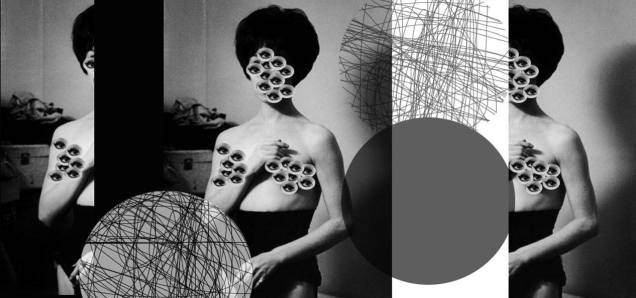No sooner had man begun to speak, than he began to lie. This could easily apply to photography as no sooner had the process been developed and lauded as the ultimately truthful way of capturing a representation than it became obvious that photography could just as easily be used to create lies. Its capacity for accuracy however made those lies even more insidious. It was apparent that, as with writing or painting, the public would have to negotiate with the photograph to recognise the difference.
Do the ‘constructed’ approaches we have seen this week give you ideas to develop your own practice?
The vast majority of my portfolio to date has been created using some form of construction within the image. Charlotte Cotton mentions Jeff Wall dividing Photographers into Hunters and Farmers . I am undoubtedly a Farmer rather than a Hunter in my approach to taking photographs. Whether my images are created through ideas I have pre-planned in advance or just through some form of cropping or editing later. I have a penchant for low-fi cameras and their results, but I tend to recreate this aesthetic using filters as it is just too convenient to shoot digitally. I cannot think of any of my shots that are pure to how they were hunted. It is interesting to note, however, that as my Major Project is developing I find myself looking for a more subtle visual truth to capture rather than the staged visual statements or constructed projects that have built up my portfolio so far.
Is our reading of a photographic ‘truth’ merely a symbolic construction itself?
As is often the case it is difficult to compare and contrast differing aspect of photographies. How can you consider the truth value of a passport photograph in comparison to a Thomas Ruff portrait? Initially they bear a striking similarity, yet one is a document to validate your identity and the other is a conceptual artwork that questions the conventions of portraiture. As they are both constructed for different purposes which is the more truthful?
Picasso stated that photography had freed painting for other tasks (Goldberg, p.20). With photography taking over the responsibility of accurate representation from traditional painting the fine-arts were able to explore a broader meaning of truth. Giving rise to Impressionism through abstract, surreal, pop-art and coming full-circle to photo-realism. This new freedom almost immediately fed back into photograph itself when artists realised the camera was just another tool to explore the world.
 Claudio Parentela Assemblage 2016
Claudio Parentela Assemblage 2016
This is a mixed-media piece formed from vintage found imagery collaged in traditional cut-out form with digitally composited pieces.
The initial reading is as a comment on the objectification of women under the ‘male gaze’ with the eyes covering the face and sensuality of the breast in a classically surrealist manner. Her pose is awkward and unnatural, but this is not surprising as the pose is about revealing the body to be regarded rather than in a comfortable manner. However closer inspection of the eyes reveals they are in fact accented with eye-liner therefore these are women’s eyes that are protecting the fragility of the partially clothed woman. Is this then a comment on women regarding themselves being regarded or in order to make the viewer aware, and therefore discomfited in their act of gazing. The chaotic lines of Brownian motion within the two spheres add to the feeling of discomfort within the image.

Edward Honaker circa2014
There are echoes of Mapplethorpe in this black & white. The bottle of dead flowers is reminiscent of some of his flower studies and the sculptural form of Honaker’s back puts you in mind of some of Mapplethorpe’s earlier Polaroids, although in a far less graphic way. This constructed photograph is one of several that Honaker produced exploring the use of photography in depicting his battle with depression. The dead flowers could be seen as a loss of hope – it’s a well-worn metaphor that prostitutes dislike cut flowers as they signify beauty cut-down in its prime and here Honaker is using them in a similar way . There is no water in the vase so they were bound to die and this can be seen as indicating without water (or sustenance) our dreams wither too. The subject has a broad strong muscular back, but the power significance of this is muted by his pose which speaks of a loss of hope. He drapes over the desk either using it as support or hoping to absorb some strength from the wooden form.

John Dugdale Circa 2000
John Dugdale had a promising career as a fashion photographer when illness took the majority of his sight from him. Since then he has been developing a well-respected body of work as a fine-art photographer. His ethereal tableaux explore memory and timelessness and are a serene counterpoint to today’s fast-paced world. Utilizing large format cameras and the 19th century technique of cyanotype to create these gentle and emotive photographs.
Although there are mild overtones of the homoerotic; his use of athletic semi-clad men – the implication is closer to fraternity and brotherhood rather than any overt sensuality. This particular image utilises double exposure to create a feeling of the subject being looked over by a guardian angel (I am reminded by Brad Silberling’s film City Of Angels from 1998). The misty effect of cyanotype and its distinct blue tone add to a dreamlike state. The sparse antique style furniture and plain background all create a feeling that we are looking at a vintage image taken some 100+ years ago. This is not an image designed to deliberately mislead, but merely using signifiers to evoke a feeling of ephemeralness.
Goldberg, V. (1981) Photography in Print: Writings from 1816 to the Present (New York: Simon & Schuster)
Cotton, C. The Photograph As Contemporary Art (London: Thames & Hudson, 2004)